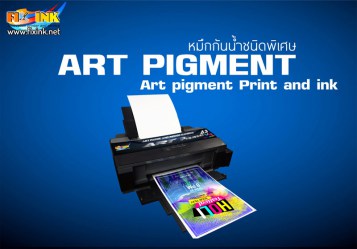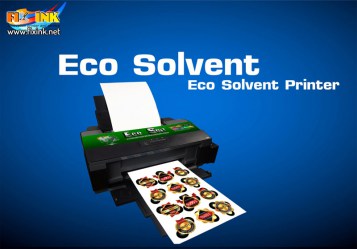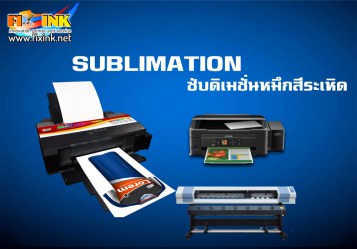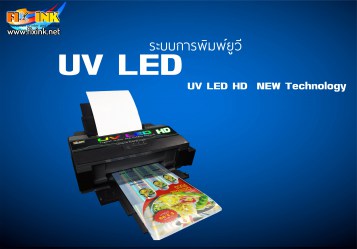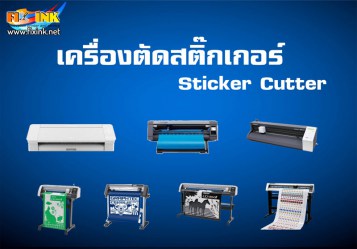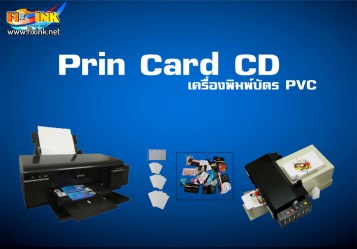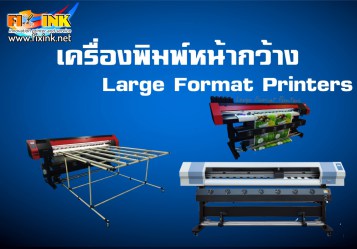Paper refers to a thin sheet of material made of bark fibers, straw, rags and possibly other ingredients to improve the properties of the paper.
The history of paper began about 5,000 years ago, when ancient Egyptians invented a method of making paper from a type of papyrus called "Cyperus papyrus". The banks of the Nile are approximately 2 to 3 meters in height. The Egyptians cut reeds to their desired paper size. Finished peel off Placed in a weave, scrubbed together and then immersed in water until soft. Beat the interwoven part to flatten into a sheet next to each other. Then used to write books or pictures. This paper was called by the name of the tree "Papyrus" because this type of papyrus grows in the Nile climate. The production of papyrus was limited in this area.
In the times of Greece and Rome An animal skin called "parchment" was introduced in the inscription of the book, in addition to the use of papyrus, which was imported from Egypt, which had a higher price and a shortage caused by The papyrus used to make paper is limited. The apartment making process starts with the introduction of animal skins such as cowhide, sheep's skin or goatskin, soaked in water for about 1 day to remove blood and dirt, then the hides that have been soaked in an alkaline solution bath. Not less than 1 week to remove hairs Strain the hides to the wooden frame and allow them to dry. Have the same thickness Animal skins, which are mostly composed of collagen, are like glue. When it dries, the animal hides can remain flaky and can be used for further use. A good quality apartment called "vellum" has a smooth, durable finish suitable for writing. Later, the apartment was developed to be more suitable for writing. By inventing the apartment to have a whiter, smoother and better able to get ink There is also a dye to the apartment in different colors such as blue, green, red, orange.
People who have played an important role in the invention of paper making are popular and pivotal in their development to the present, back to the Chinese. Around 105 AD, a Chinese named Jai Lun brought the old rags. The wood chips were boiled with water and pounded until the water was pulp. Bring the water pulp to pour onto a cloth sieve and spread evenly. The water will seep through the sieve, leaving only the wet pulp. When dried in the sun, it can be peeled and used for writing. Later, Jailun invented a better method of making paper. Using a sieve dipped in a basin of pulp water, gently spoon out the pulp before drying and use. This method makes the paper thicker and more consistent. The paper obtained from the Jai Lun method is tougher than the Egyptian method due to the disordered arrangement of the fibers. The use of paper produced by this method is widespread in China. Later it was spread to Korea, Japan, Central Asia, Arab and Europe. Several major cities have set up paper mills in the Arabian cities. Paper making is made from old rags as raw material, mostly due to the lack of wood pulp. Together with the tools used to make paper are not very good The resulting paper was then modified with a powder coating. Makes the Arabian paper white and suitable for writing better. Arab paper is being sold in Europe where demand is increasing. The process of producing paper at that time was often kept secret.
Evolution of relief printing (Relief Printing) Around 170 AD, the Chinese copied textbooks and images by carving letters and images on stone slabs to make the characters or lines embossed. And put the paper on Using charcoal to rub until the picture of letters on the paper. Around 400 AD, the Chinese named Hai Tang successfully invented the ink. Therefore, the seal, which was made by bringing wood or stone blocks, was made into a mold. Dip the ink and stamp it on the paper and other materials.By making small stamps, larger molds have been made, with more text and images. The mold can be dipped in ink to copy on various printing materials, this type of printing is called Wood Block Printing (Wood Block Printing) later in the year 1040 a Chinese name Bai. Cheng invented the letters on a piece of clay, hardened by drying in the sun and then burnt. To use, use a clay stick with the corresponding characters to form the desired text. Then used as a mold for printing. In 1400, Koreans successfully invented a typewriter made of an alloy between copper and tin. Make the font more strong
On the European side, in 1455, Mr. Johann Gutenberg (Johann Gutenberg) also successfully invented the alloy print. Mr. Gutenberg has also developed a printer, ink printer, paper used for printing. And the method of printing to keep improving it has been regarded as "Father of printing" embossed printing called the Letter Press is becoming more and more popular. Printing houses were set up in major cities and distributed to America. Since manual typesetting is labor intensive and time consuming. Therefore, Linecast Typesetting was invented, which uses heat to cast the type of typeface so it is called "hot type". Linotype sorting machine (Linotype), which will sort by line. It is commonly used in newspaper molds. And a monotypical sorting machine (Monotype), a machine that is arranged into a line Popularly used in book molds in 1898, the invention of optical typesetting machine. (Phototypesetting) Used to create typos. “Cold Type” has also been developed for a plate relief mold by using a photoresist method using a photoresist to put on a metal sheet used as a mold. Making mold making easier
The machines used to print the embossed floors in the early days were labor-intensive. It is a simple uniform. Later, the printer has been developed to improve steadily. In 1799, Mr. William Nicholson (William Nicholson) invented a printer that uses a steam engine to work successfully. Initially, the printer was a sheet feeder. When there is a need for faster printing Therefore, a printer that successfully fed roll paper was invented. Later, a natural rubber embossed surface was molded and aniline dye was used as an ink for printing. Therefore called Aniline Printing when al-linen is banned due to toxicity. Therefore, another type of ink was chosen and re-named this type of printing as Flexography. Flexography was developed later. Synthetic rubber is used instead of natural rubber. Use ink to dry quickly. And bring anilox roller (Anilox Roller) to help supply the ink to the mold. This is an important part of the flexographic system that has been used until today.
The evolution of recess printing (Recess Printing) Depth printing is different from convex printing in that the part of the image that needs to appear, the printing ink will be a groove deep in the mold to lock the ink to pass through to the material. Keep typing The Chinese were the pioneers of this type of printing, cutting the logs into deep grooves and using them as a mold since the 1st century. Later, the Italian Maso Finigura (Maso Finigura) used copper sheets as a mold instead of logs. Chinese style wood In that era, it was used to print historical events and religious images. And this printing process is called Printing Intaglio (Intaglio). Initially, mold making was carved on a metal plate. Later, the method was used to coat metal sheets with a substance that is resistant to acid corrosion. Use the iron to scrape the coating on the part you want to create the image and then use the etching acid until the grooves are formed along the area being scraped. It is then developed by milling a metal mold with small holes distributed according to the desired intensity to ink, resulting in a more dimensional image.
In 1844, William Henry Fox Talbot introduced the technique of creating images through glass panels to make metal molds and called the process photogravure. The development of the Gravure system continued, and was able to invent a high-speed roll feeder called the Rotogravure in 1880; and Later, the plate-fed Gravure machine was invented in 1913. The gravure printing is still in use today. Suitable for printing high volume jobs
There is also another type of deep printing. Is pad printing (Pad Printing) Pad mold is a deep mold made of metal or polymer. The printing principle of this type of printing is that when the mold receives ink, it will transfer the ink to the medium which is made of silicone rubber Cone is called a pad (Pad). The pad transfers ink to the substrate. Before 1956, J Latin was used as a pad. Printing is still using a hand printer. Most of the work is used to print watch faces, ceramic plates. In 1965, a German named Mr. Wilfred Phillipp invented a pad printer for printing watches, called the Tavern printer. Tempoprint and in 1968 Mr. Philippe also used a silicone pad to make a pad instead of J. Latin. Resulting in better quality prints And is also a material used until today
The evolution of flatbed printing (Planographic Printing) Flat printing was born after letterpress printing and Intayo printing in 1798. The Bohemian Mr. Alois Senefelder was. The stone printer was invented. (Lithography), which is a flat surface printing. By making a picture that needs ink on the stone mold to be waxed Then use water mixed with acacia glue to rub on the stone mold Water mixed with acacia glue will not adhere to the wax. And when rolling the ink onto the mold Ink is oily, it will not adhere to watery areas, but will adhere to the waxed areas where the image is. When a sheet of paper is placed on a mold, it will create an image on that paper and produce a clearer and more beautiful image than other printing systems at that time.
In 1905, an American named Ira Washington Rubel accidentally discovered a way to sharpen images, that is, instead of having the paper pick up ink directly from the mold. Then let the rubber fabric be pressed on and get the ink from the mold first Then the rubber cloth is pressed against the ink that is printed to the paper again. Because the rubber fabric is soft The ink transfer is complete. The image is clearer and more beautiful. This type of double-transmitted image is called Offset Printing.
Offset printing has evolved in many areas. The mold is used as a metal sheet. Coat the photosensitive agent on the mold. Improve the visualization on the mold with higher resolution. Waterless offset printing was invented using a silicone-bonded mold that was not oil-treated, and the visualized part of the silicone was bitten off. In addition, the printer has been developed to print faster, more accurate and better print quality. Print with color insert in one-way printing There are both a sheet-fed printer and a roll-fed printer. Because of the good print quality and high flexibility. Offset printing is popular and is used widely and widely until now.
The evolution of openwork printing Openwork printing has been around since ancient times by making simple molds by cutting, punching, paper or other materials into holes according to the desired image. Place the mold on the item you want to print, then use ink spray or wipe it on the mold. Will get the above picture This type of printing says Stencil Printing (Stencil Printing). In the early days, letters were printed. Various marks or symbols that way China has been using this method to print images on fabrics since the 6th century. This type of printing often has problems. Molds which were made of paper or other materials in those days were not very strong. Therefore able to print less workpieces And the pattern of images or characters will be partially broken due to the cutting of the mold, the remaining parts of the mold for sticking together are not frayed. Makes the print look unattractive Later, a sheet metal was used to make a mold to make the mold stronger. Rather, it is difficult to make molds and takes time to make.
Later developed to make the paper more durable And there is a paper leader to wax it and use a sharp metal tip to prick it by hand on the wax paper in a small hole arranged together to make a picture Even better, it was a job that took time and craftsmanship. In 1876, Thomas Edison invented a printer that used that principle. It's called a duplicator. Or a duplicator of the City's City (Stencil Duplicator) and also invented a pen, Stencil (Stencil Pen) used instead of a metal tip. Later, a method for creating an image on wax paper was developed using a light-emitting method that has been used until now.
Back in the 17th century, the Japanese used human hair and glue to make stencils. Resulting in finer work than paper cutting Call this method of printing Hair Stansil printing (Hair Stencil) and later, stronger silk threads were used to make molds instead of hair. Therefore called this method Silkscreen Printing Silkscreen printing has spread into Europe and is popular both in France and England. And was published to the Americas In the late 19th century, an American named Charles Nelson Jones invented the screen printer. Makes screen printing production faster. Silk screen printing is constantly evolving. And it is widely used because of its low cost and easy operation. At present, synthetic fabrics are used instead of silk in the making of molds. And using a photosensitive coating before applying the prototype image and then creating the image with a light beam.
Digital Printing, on the other hand, has evolved in computers and related devices after the invention of the first computer, ENIAC (Electronic Numerical Integrator and Computer), in 1945. Printers connected to computers in the early days used to print only characters without emphasizing beauty. Around 1979 there were several companies selling small computers called. Microcomputer Computer peripherals have also been developed. Computer-attached printers or printers have also been developed. The invention of the printer using various printing principles such as
Thermal Transfer Printing, which uses the principle of transferring heat from the print head to a film coated with ink, causing the ink to adhere to the substrate, resulting in an image.
InkJet Printing, which uses the principle of spraying tiny droplets of ink from the nozzle to create an image on the substrate.
Electrostatic printing (Electrostatic Printing), which uses the principle of controlling the beam to generate an electric charge on the metal cylinder and then the toner to adhere to the metal cylinder along the charged area, resulting in the image being transmitted to the substrate Electrostatic printers that use a laser beam are referred to as electrostatic printers. Laser printer or laser printer
In addition, the printers that use the above-mentioned principles have been developed to have better quality and are able to print with colors similar to the original. But the disadvantage is that the productivity is low compared to offset printers, until 1993 sold a high-speed printer called E-Print 1000, which has been developed to date under the name HP Indigo. Many places such as Xerox, Canon, Minolta have released high-speed printers based on the principle of laser color copiers. There is also another printing system that uses an offset printer to create a mold on a mold from the data on the computer before printing. The development of digital printing continues for both better quality. Higher print speed Lower costs per sheet




